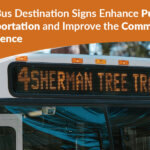The World Day of Remembrance for Road Traffic Victims is an international event commemorated every third Sunday of November every year. It aims to remember the millions of lives that have been lost and those seriously injured on the many roads around the world and to acknowledge the suffering of victims and the affected communities and families.
Each year, many affected individuals are added to the millions that have been or are still being affected by traffic accidents. This solemn occasion is a crucial tool for governments and those who are involved in crash prevention or response to crashes, as it offers an opportunity to demonstrate the large impact and scale of road injuries and deaths. Moreover, it aims to end the often inappropriate and trivial response to road injuries and death while advocating for urgent concerted action to cease the carnage.
On top of this, the occasion is a tribute to the first responders, dedicated medical professionals, police, and emergency crews that deal with the traumatic aftermath of road accidents every day.
Road victim organizations under the FEVR (Federation of Road Traffic Victims) in Europe have observed this day since 1995. It was initially known as the ‘European Day of Remembrance’ until other nations from Asia, South America, and Africa joined in and it became recognized as ‘World Day.’
On October 26, 2005, the United Nations adopted the World Day of Remembrance for Traffic Victims as an appropriate acknowledgment for the victims of road traffic crashes and their families. Today, this special occasion is commemorated all over the world, not just by national government organizations advocating for road victims and road safety, but also by all related and relevant governments and stakeholders. Even discerning businesses specializing in transit sign solutions are participating each year to promote better fleet management and driver, passenger, and pedestrian safety.
Promoting evidence-based actions to prevent and eventually stop further road traffic deaths and injuries
The World Day of Remembrance for Traffic Victims also acknowledges that traffic injuries and deaths are preventable to a great extent because the risk of incurring or causing an injury is largely predictable. Moreover, many existing countermeasures are proven effective. Exposure to risks of road injury can be minimized with these strategies:
- Better land use to minimize the volume of motor vehicle traffic;
- Provide efficient networks where quicker or shorter routes are also considered safe;
- Encourage people to change from high-risk to low-risk modes of transportation; and
- Place restrictions on vehicles, the road infrastructure, or motor vehicle users.
Setting speed limits and classifying roads may also help reduce the risk of traffic accidents and injuries.
Transign is one of the transit sign companies lending a helping hand in improving fleet management. The company offers a wide range of technologically advanced transportation sign solutions, which can help leading bus dealers, fleet operators, and transit agencies to provide safer and reliable services to their customers.














